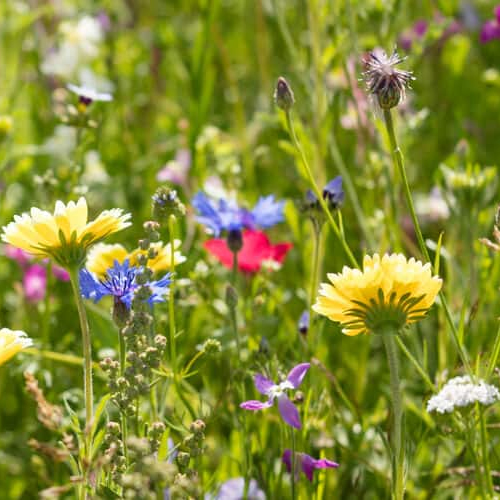
By Kathy Torres
The next time you walk into the Produce Market and Backyard Nature Center at Wingard’s Market, look to the right of the building and you will see a small area that has been planted with various perennials to create a lovely mini garden. We started building this garden about 10 years ago to serve as an example for customers interested in attracting hummingbirds, bees and butterflies. Black Eyed Susan, Cone Flower, Spiderwort, Bee Balm, Aster, and Coreopsis are among the plants living there. New growth is peeking up through the ground already, and this perennial garden will be alive with colorful blooms, nature’s “vacancy” sign to alert pollinators and wildlife that rooms are available in this garden resort. Because different perennial plants bloom at different times during the growing season, there will be a continuous color pallet present throughout spring and summer.
Another way to create a similar garden or “mini meadow” in your own landscape is made possible by a new product line available this spring at Wingard’s. We are proud to introduce Earth Science Growth Essentials, including seed, fertilizer, soil conditioner, and mulch, giving you everything you need and an EASY way to do it! Before we get into the types of seed combinations available, it’s important to note the value of having a mini meadow. The word “meadow” suggests a large field in a rural area with miles of wildflowers and grasses, however, it’s actually possible to create the same effect in a much smaller space, as little as 50 square feet, thus… a “mini meadow.” Perfect for a small space in your landscape, a square foot garden or even a window box, this type of planting brings a wide-open-spaces feel to a smaller area. Typically plant mixes will include annuals, perennials and wildflowers that are native to our region, therefore, more hardy and easy to maintain. Last, but most important, the ecological advantage resulting from meadow type planting is the payoff, for example:
(1) Pollinators, like bees and butterflies, are attracted, will feed and nest in a mini meadow (it is a fact that the overall number of pollinators is falling due to pesticides, pollutants and loss of habitat, so every mini meadow offsets some of that loss).
(2) Hummingbirds and other birds find food andshelter, and some species (ground nesters) will find a place for nesting. In fall and winter, seed pods may be useful as a food source when food is scarce.
(3) Many beneficial insects are attracted, as well as frogs, lizards and other wildlife.
(4) Local biodiversity results from the combination of all the “creatures” attracted to a mini meadow habitat.
(5) Less water is often needed because native wildflowers are adapted to local conditions.
(6) Wildflowers enhance soil health by promoting microbial activity and preventing erosion.
Earth Science Mini Meadow Mixes provide a blend of seeds intended to create beautiful, ecologically beneficial meadows, which include a variety of native and non-invasive flowering plants. Several types of mixes are available, providing an economical alternative for a wildflower garden. Make it easy with this all-in-one formula that contains natural wildflower seed, mulch, plant food and soil conditioners. Choose from the following collections:
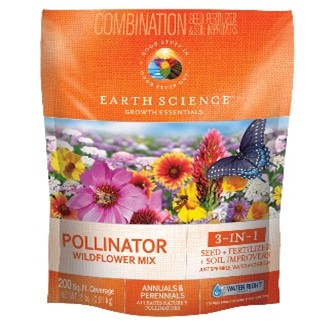 The Pollinator Mix: includes Annual Candytuft, Siberian Wallflower, Zinnia, Purple Coneflower, Rocket Larkspur and Lacy Phacelia.
The Pollinator Mix: includes Annual Candytuft, Siberian Wallflower, Zinnia, Purple Coneflower, Rocket Larkspur and Lacy Phacelia.
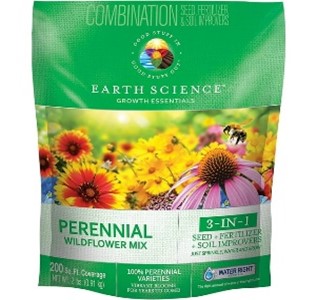 The Perennial Mix: assortment of Siberian Wallflower, Lance Leaved Coreopsis, Sweet William Pinks, Blue Flax, Dwarf Columbine, Shasta Daisy, Purple Coneflower, Blanketflower, Mexican Hat, and Black-Eyed Susan Fringed Pink.
The Perennial Mix: assortment of Siberian Wallflower, Lance Leaved Coreopsis, Sweet William Pinks, Blue Flax, Dwarf Columbine, Shasta Daisy, Purple Coneflower, Blanketflower, Mexican Hat, and Black-Eyed Susan Fringed Pink.
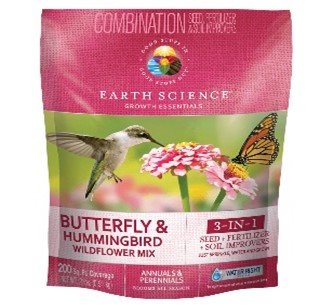 Butterfly & Hummingbird Mix: includes Zinnia, Cosmos, Shasta Daisy, Sweet William and Black-Eyed Susan.
Butterfly & Hummingbird Mix: includes Zinnia, Cosmos, Shasta Daisy, Sweet William and Black-Eyed Susan.
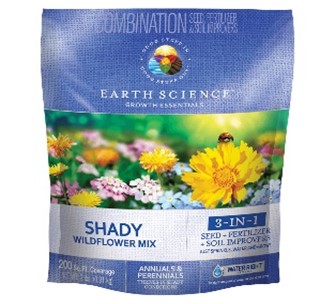 Shady Mix: blend of 11 wildflower species, including Annual Baby’s Breath, Annual Candytuft, Purple Coneflower, Corn Poppy and Johnny Jump-Up.
Shady Mix: blend of 11 wildflower species, including Annual Baby’s Breath, Annual Candytuft, Purple Coneflower, Corn Poppy and Johnny Jump-Up.
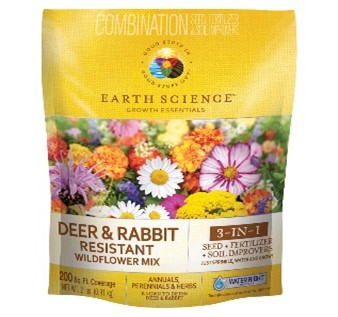 Deer & Rabbit Resistant Mix: assortment of 10 flower and herb varieties known to be resistant to damage by deer and rabbits, including Shasta Daisy, Perennial Lupine, Black-Eyed Susan and Gold Yarrow.
Deer & Rabbit Resistant Mix: assortment of 10 flower and herb varieties known to be resistant to damage by deer and rabbits, including Shasta Daisy, Perennial Lupine, Black-Eyed Susan and Gold Yarrow.
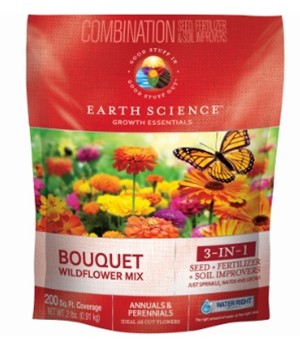 Bouquet Mix: blend of 9 wildflower species, including Cosmos, Rocket Larkspur, Zinnia, and Shasta Daisy.
Bouquet Mix: blend of 9 wildflower species, including Cosmos, Rocket Larkspur, Zinnia, and Shasta Daisy.
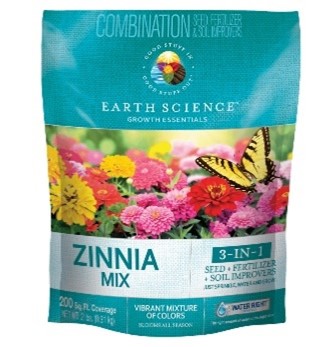 Zinnia Mix: features colorful Zinnia’s in shades of orange, pink, purple, red, white and yellow. (Non-native, but butterflies love them!)
Zinnia Mix: features colorful Zinnia’s in shades of orange, pink, purple, red, white and yellow. (Non-native, but butterflies love them!)
With the exception of the Shady Mix, all of these wildflower mixes should be spread in an area that receives at least 6 hours of direct sun. Follow these instructions:
- Rake area to remove dead grass and debris. Seeds grow best when they have direct contact with the soil.
- Uniformly apply flower mix so the area is mostly covered, but bare ground is still visible.
- Water daily or as needed to keep the soil surface and flower seed moist for the first 2 weeks. This is critical for flower seed to germinate and thrive. When enough water has been applied, Earth Science’s patented Water Right Crystals will expand and sparkle. When the crystals disappear it’s time to water again.
If you can’t get to the countryside where the meadows stretch out along the highway, don’t worry, plant a mini meadow right at home where you can walk out of the door and enjoy the simple beauty of wildflowers. Fill a vase with cuttings and feel a bit of pride that you’re also improving the environment on good old planet Earth.

